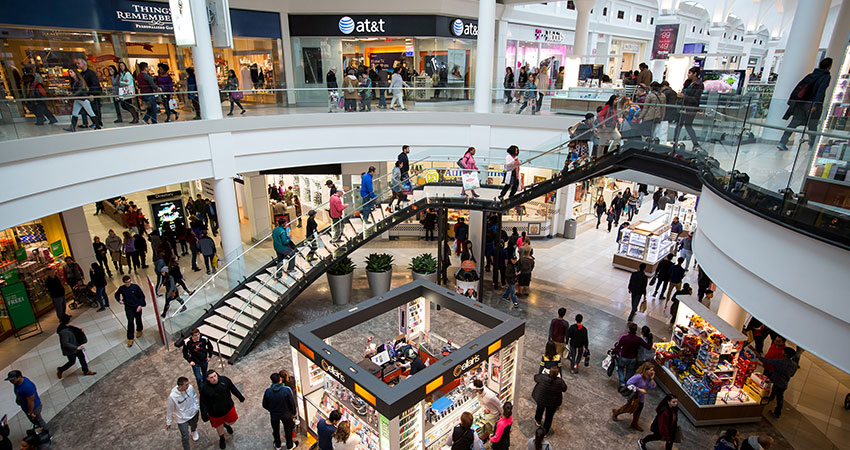COVID forced retailers into extremely compressed digital transformation timelines. Those with basic ecommerce websites playing a peripheral role suddenly needed to become digital-first, omnichannel operators – overnight. Many cobbled together solutions to get through the toughest days of the lockdown.
But those days are over. COVID has not entirely passed, but shoppers have returned to stores in earnest, as recent earnings reports like those from Macy’s are demonstrating. Retailers now need to determine which COVID innovations they will keep and how those measures will mature over the long term.
To maximize the long-term value of COVID innovations, retailers need to bring the benefits of digital to brick-and-mortar, tailoring omnichannel retail strategy to verticals and scaling capabilities to accommodate long-term needs.
Cross-Pollinate Digital, Brick-and-Mortar Strengths
Focus on bringing the benefits of digital to brick-and-mortar and vice versa. For example, average order value is key to how many retailers, especially grocers, generate revenue. AOV benefits from dwell time, which leads shoppers to pick up extra products while walking the aisles even if they only meant to pick up broccoli. The importance of dwell time to AOV means the surge in ecommerce could prove an obstacle.
But you can combat this trend by replicating the effects of dwell time online. Bring complementary products customers might spot in the store to the digital aisle. Apps like Instacart already do this, suggesting products based on past purchases. You can go one step further by suggesting new complementary products shoppers have not considered.
On the flipside, if getting customers to buy more is easier in store, collecting first-party data on their visits and interests is easier online. As they return to stores, you need to figure out who your customers are and how best to serve them. Instead of simply observing digital behaviors on your site, follow up with email surveys and offer rewards to learn about shoppers; you can also gain compliant first-party data from partner firms, as third-party cookies are sunset.
Tailor Your Omnichannel Strategy to Customer Needs
When vaccinations became available and the U.S. entered a new pandemic phase, many dramatically expounded on whether COVID-era innovations like curbside pickup and contactless commerce would persist. Would we ever go back to wandering stores when everything we wanted could be delivered?
Due to varying customer needs, innovations like curbside pickup will not persist or peter out equally across industries. Thinking strategically about which innovations to keep, expand, and shutter depends on your specific vertical.
For example, grocers should continue offering curbside pickup or delivery via their own mobile app to encourage direct transactions, rather than through third-party services. Also, lugging heavy grocery bags to a car really is an inconvenience, so doubling down on curbside will improve the customer experience.
But the opposite is true for a retailer like Bath & Body Works. For one, carrying an extra vanilla-scented candle to the car is not a huge hassle. Secondly, specialty retailers depend on striking customers’ interest in complementary products and in-store deals to maintain margins. So, giving them incentives or options to not enter the store is not in their best interest, nor a huge boon to the customer.
Scale Digital Capabilities for the Long Term
Whatever COVID innovations you do keep will need to be matured. It’s also likely you will need to rebuild (or build for the first time) the infrastructure required to keep customer data secure, scale logistics, and boost efficiency.
Many retailers turned to digital partners to get immediate help in spring 2020. They created temporary systems to develop critical features like BOPIS, track inventory and enable capabilities like store-to-store shipping. But for many, the foundation of those innovations was flimsy, either not cloud hosted or compliant with regulations. Maybe it worked to a point but had glitches and was not built to function optimally at scale.
To rebuild for the long term, you need to work backwards from the ideal system to engineer an ideal solution. Accepting what you have now and simply adding to it is liable to result in a sub-optimal hodgepodge of capabilities.
Instead, make the tough decisions to dismantle what you have. Rely on marketing to explain to customers why capabilities may briefly be down, and why you’re reinventing them. Use best-in-class technology to build new systems. And make sure you have the right talent to get the work done, as the days of loyal employees working 14 hours from their couch to make magic happen in a time of crisis are over.
The pandemic inspired a decade’s worth of retail innovation in a year. But that does not mean the story of that innovation had a happy ending; rather, the work is ongoing. Optimizing your COVID innovations for the long term will ensure you outperform others in your category who assume that early days, slapdash adoptions will suffice to secure a competitive advantage.
Jon Reily is SVP, Commerce Center of Excellence at Bounteous

